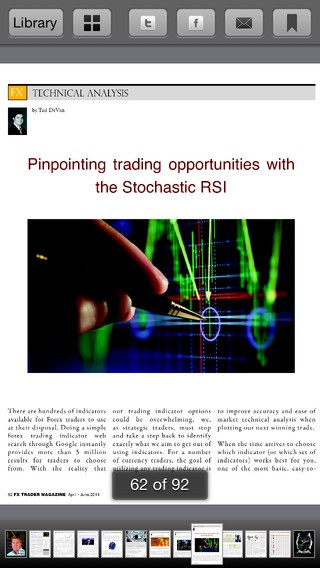FX Trader Magazine
Post on: 16 Март, 2015 No Comment

Finding Your Trading Style
Trading is all about making decisions. That seems simple and straightforward enough, but Im not referring to the typical buy or sell, how much, or where-type trading decisions. Instead Im talking about the likely biggest trading decision youll ever make-Deciding exactly what kind of trader you want to be. How will you approach the market? What timeframe will you focus on? What will inform your trading decisions? In short, deciding what trading style you will pursue will probably be the single biggest determinant of your trading success or failure.
From my experience, most traders dont even explicitly acknowledge this question, much less get around to actually settling on an answer. But the best traders always do and thats how they survive year after year, market after market. Such trading success is usually attributed to discipline, but that raises the question Disciplined to what? The answer, I would suggest, is maintaining a disciplined trading style. But you cant achieve that discipline if you dont settle on your trading style in the first place.
I spent the first dozen of my 20+ years in FX as a spot market-maker and proprietary trader in New York, so I know first-hand the difference between a disciplined approach and an undisciplined trading style. Like many new or aspiring traders, I spent my first couple of years trading without an explicit style and my results showed it. Money made one month would be given back the next, or money made in the morning would be coughed up later that same afternoon. It was a frustrating experience to say the least.

One thing I was doing right was monitoring my daily P&L and analyzing the results on a monthly basis, which is something I would urge all traders to do. Its the only way to objectively evaluate your trading results, as memories can be tricky. The key metrics I focused on were the number of winning/losing days and the average win/loss amount. I was winning more days than I lost (good), but my average loss was greater than my average win (bad). That pointed me to the solution to my problems, namely cutting losses sooner, but it also forced me to reconsider my lack of a defined trading style. I went on to develop a more explicit trading approach, writing down explicit dos and donts to remind myself and reinforce discipline, and my results improved significantly. One simple example: my P&L analysis also revealed that I was routinely losing money on the last trading day of each month. Solution: I stopped trading the last day of the month, no matter what was happening.
Theres no universal style that fits all traders all the time and we all have to go through a process, frequently trial and error, to see what works best for each of us. The main components of style that I focus on are: trade timing, trade rationale, and trade management. Personal circumstances will frequently dictate key elements of trading style, such as trade timing, which I use to refer to trade frequency/duration (e.g. intra-day/multi-day).
For instance, if you have a full-time job outside of trading, youre probably not going to be able to watch markets and trade actively on an intra-day basis, so youll probably want to focus on a medium to longer-term trading style. If youre still determined to pursue short-term trading (say, trading European/London markets in the Australian evening), it helps to explicitly recognize your choice to reinforce trading discipline. In this case that means never allowing a short-term trade to turn into a long-term trade. Even if its a winner, the break in style discipline will take you away from your conscious plan into uncharted waters where bad things can happen.














